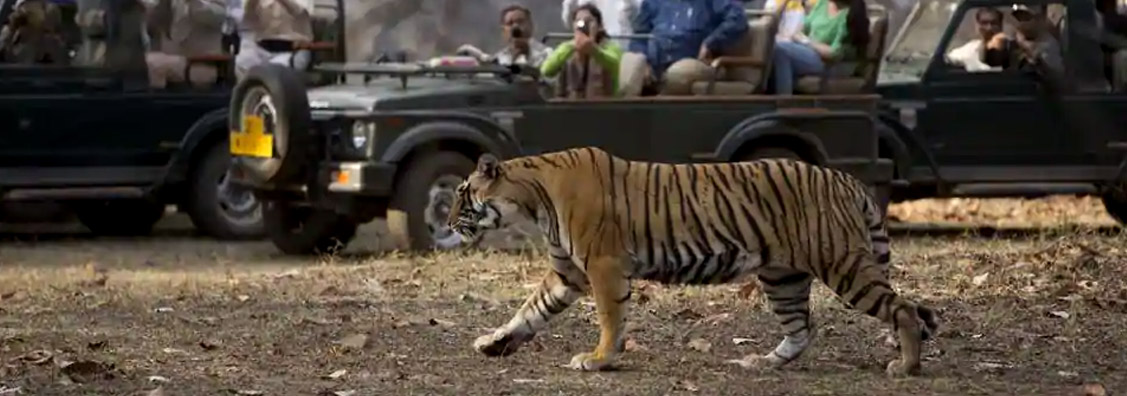

Home / Attractions / Ranthambore
Ranthambore is located about 11 km away from Sawai Madhopur. Ranthambore was the private tiger reserve of the Maharajas of Jaipur. Ranthambore is lying on the easternmost part of the Aravalis. It is adorned with pavilions of towers and watches. The town of Ranthambore is watched over by the huge Ranthambore fort. Ranthambore National Park and Ranthambore Fort are the prominent attractions of Ranthambore. Every year in the month of September an annual fair is held on the occasion of Ganesh Chaturthi in the temple of Lord Ganesha which is situated in the Ranthambore fort.
Ranthambore is primarily scores its point on the list of tourist attractions because of its tiger reserve. However, the place offers you much more for sightseeing and going on excursions. Situated on the border of the Thar Desert, Ranthambore is surrounded by the Vindhya Hills and the Aravali Hills. Its very location gives it an advantage of possessing the treasure of mysterious desert lands as well as plain area near the hills. The vegetation primarily comprises of deciduous forests.
Ranthambore was the erstwhile hunting grounds of the Maharaja of Jaipur until 1955 when it was declared as a game sanctuary. With the emergence of Project Tiger, it was declared a national park and listed among its protected reserves in 1980. With time, it emerged as the wildlife photographers' delight as Golden Triangle Tour with Tiger Safari offers them a chance to photograph the tiger in its natural environment. A Jeep Safari in the national park, a cultural and traditional experience with the Meena tribes, and for the more adventurous, a night-out in the hideouts of the park makes Ranthambore a good choice to visit.
Rao Hammir Deo Chauhan, the ruler of Ranthambore fought against Alauddin Khilji in 1301 A.D. In the 13th century this land was taken over by Govinda who was the grand son of Prithviraj Chauhan. Later, he was succeeded by Vagbhatta who built a imperial temple at Jhain and redecorate Ranthambore. Many battles were fought. Many rulers won and lost. By the middle of the 15th century, the fort was captured by Rana Kumbha and afterwards it was handed it over to his son by him. Afterwards this glorious fort was occupied by the Mughal emperors, Aurangzeb and Akbar & the Hada Rajputs of Bundi.
In 1754 at the death of Aurangzeb this fort was gifted to Maharaja Sawai Madho Singh I of Jaipur by the Mughal Emperor Shah Alam, it was maintained as the private hunting preserve of the Maharajas of Jaipur from that time. Queen Elizabeth II and the Duke of Edinburgh were the part of these hunting parties.
Ranthambore Fort, Ranthambore National Park, Surwal Lake and Kachida Valley are the main attraction of City given below:
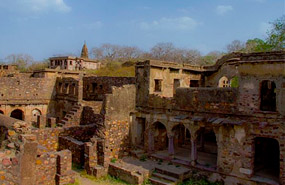
The mighty powerful fort of Ranthambore has seen an immense number of attacks and conquests. The fort was the major barrier for the invaders because of the difficulty they faced to capture and the well-planned construction of the fort. The Ranthambore Fort is situated inside the Ranthambore National Park which was the hunting grounds for the Maharajas of the Jaipur dynasty. It is located in the town of Sawai Madhopur in Jaipur. It had been built in the mid 10th century, according to the Government of Rajasthan's Amber Development & Management Authority, during the rule of Sapaldaksha.
The beautiful ruins of the fort have an aesthetic appeal that can attract the vision and minds of all the people who lay their eyes on the masterpiece. The fort is considered an epitome of power due to its history of defending the Rajput Empire against the attacks of foreign invaders. The fort is now a tourist attraction and appeals too many historians and many common people who wish to seek more knowledge and experience the architecture and history of the place.
The fort was captured by Prithviraj Chauhan in the 12th century from the Yadavas. During the spread of the Muslim rule, the fort was attacked a number of times to attain power over the Rajputs and the western part of the country. It was finally conquered by Khilji by bribing the minister. This fort reminds us of the events and is a monument of high significance in the history of India.
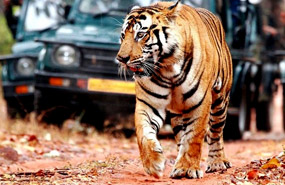
Ranthambore National Park is one of the biggest and most renowned national park in Northern India. The park is located in the Sawai Madhopur district of southeastern Rajasthan, which is about 130 km from Jaipur. Being considered as one of the famous and former hunting grounds of the Maharajas of Jaipur, today the Ranthambore National Park terrain is major wildlife tourist attraction spot that has pulled the attention of many wildlife photographers and lovers in this destination.
Ranthambore National park is spread over an area of 392 sq km. along with its nearby sanctuaries like - the Mansingh Sanctuary and the Kaila Devi Sanctuary.The park is majorly famous for its tigers and is one of the best locations in India to see the majestic predators in its natural habitat. The tigers can be easily spotted even during the day time busy at their ordinary quest- hunting and taking proper care of their young ones.
Ranthambore is also counted as the famous heritage site because of the pictorial ruins that dot the wildlife park. Certainly, a visit to Ranthambore National Park is a treat for every wildlife and nature lover. The time spend on watching tigers roaming around, verdant greenery, a gamut of other species of chirpy birds and animals is priceless and worth enough to be explored at least once in a life.
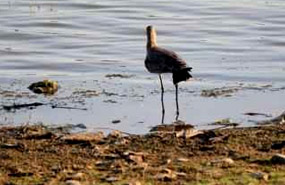
The Surwal Lake is located at the 30 min of the drive from the Ranthambore National Park and around 15 min of the drive from the Sawai Madhopur station. The lake is surrounded by the countryside villages and farmlands, spread along the 7 km stretch of village road whose one side is the lake and the other side is farmlands. The lake is considered as the paradise for the birding and a large number of the bird-loving tourist visit here to enjoy and photograph the mesmerizing view of exotic birds. The winter season is the perfect time for birding here, especially, the second half of the winter season when the water level dips and gets shallow and it is easier for birds to catch the fish in the shallow water. During this time, you get the view of the hundreds and hundreds of birds in and around the lake looking for the fish to eat as well birds in the farmlands and canals on the other side of the lake looking for food. The morning time, especially, around the sunrise is the best time for birding as you can spot more than 50 species of beautiful birds by roaming few hours beside the lake. You can take a morning walk on the road along the lake and watch these birds in farms and lake on both sides of the road searching for foods. The beautiful sunrise, spectacular countryside landscape and numerous species of exotic bird flocks offer you the mesmerizing view that is way beyond the description and can't be limited in few words. Few of the prime bird species that can be spotted here are Bar headed Geese, White Breasted Kingfisher, Gray heron, Common Kingfisher, Shrike, Indian Robin, Hoopoe, Oriental Magpie Robin, Common Babbler, Egret, Jungle Babbler, Red Wattled Lapwing, Pelican, Stilt, River Tern and many other species. The quaint countryside surroundings along the lake with the cover of intense tranquility spread everywhere, except the melodious sound of birds chirping, which will provide you the refreshing feeling and solace of mind. During the summer season, the lake gets dried due to the excessive heat and thus you will not find much of the bird flocks here. In the winter season, the lake is having the low water level, which is best for birds to catch the fish in the shallow water so the ideal time to visit here and spend time with the wonderful beauty of nature and exotic birds. So, the period from November to March is best for bird watching at the Surwal Lake and it will disappoint you if you visit during the rest of the year. So, if you are on Ranthambore tour in winter season then you must visit the Surwal Lake to get mesmerized by its picturesque beauty and enjoying the birding.
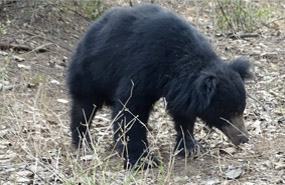
This valley, which consists of many rocky outcrops and low hills, is located close to the outskirts of the park. This area contains a majority of the Panther population of the park. The panthers avoid venturing into the main jungle to avoid conflicts with tigers, who are known to kill them. This area also has a good population of beers.
Visiting Kachida Valley in Ranthambore gives you a thrill of a lifetime especially if you want to flee from your routine life. Here, you get fascinating views of wild animals that will not only excite you but will also let you experience goosebumps. Located on the circumference of the attraction in Ranthambore park, people are provided here with jeep safari to explore the area with a little structure and have the real time, an eye to eye view of wild animals and their actions. Sloth Bears and Panthers are seen here in large numbers, and the lucky ones can also have the sight of leopards as leopards avoid the thick inner forest area due to the presence of the lions there. The valley surrounded by the hilly terrain add to its beauty and provide you with extreme adventure. ...
